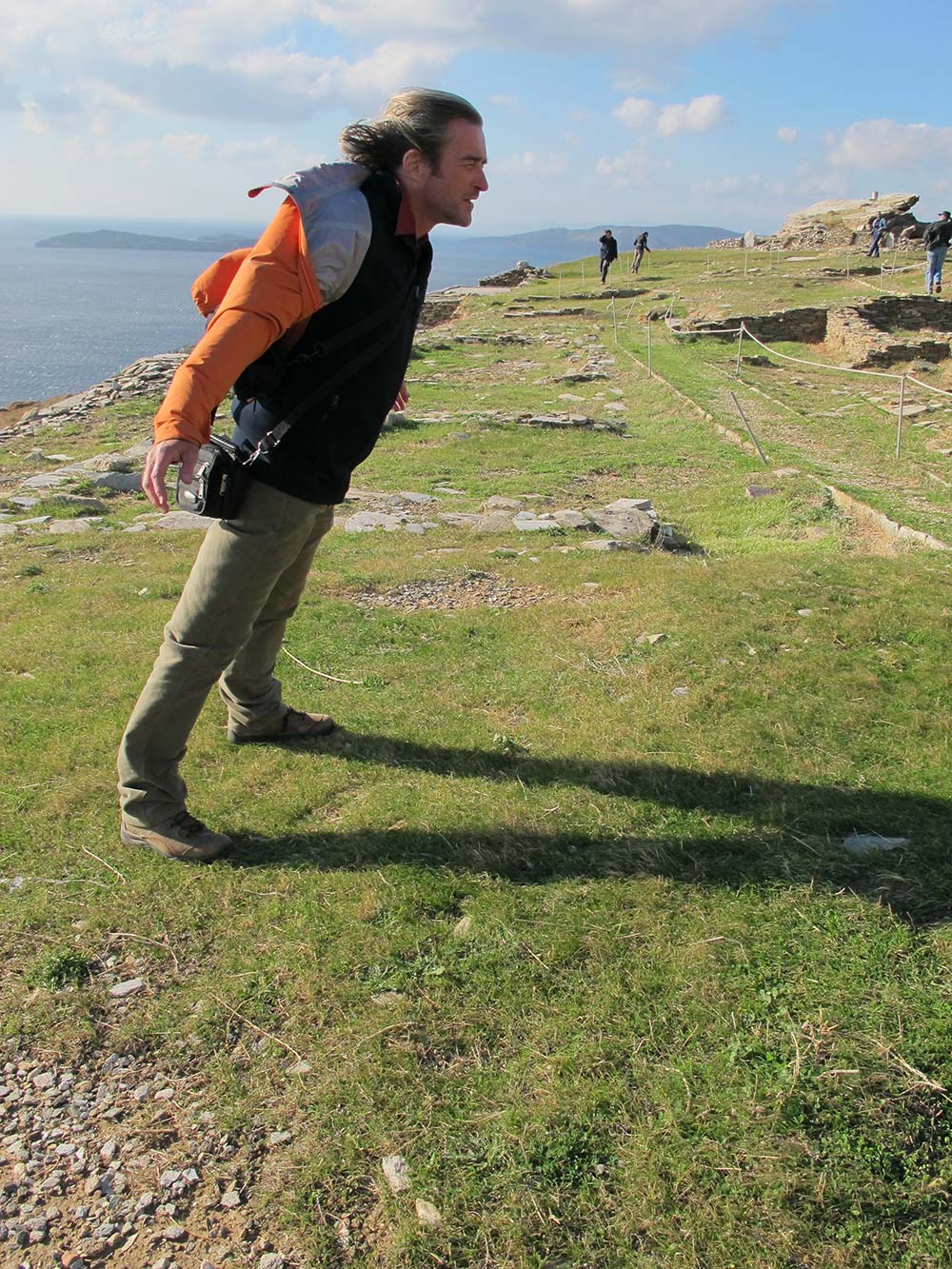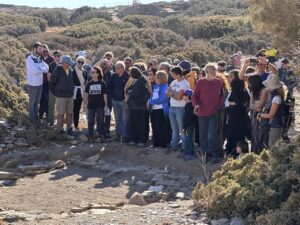by Irma Havlicek
Online Producer, Powerhouse Museum
Here’s a video (2 mins 17 secs) showing how very windy it can be at Zagora. I can tell you from personal experience that the wind sometimes felt stronger than I was able to capture in the video.
I think there are a couple of reasons it was hard to capture on camera the power of the wind at Zagora. One is the kinds of plants at Zagora which, it seems to me, are perfectly adapted to the conditions there. There are no tall-limbed, big-branched, wide-leaved trees there. Branches and leaves on trees like that would be torn to shreds in the Zagora winds.
What does survive – and thrive – there are tightly packed, tough and small-leaved bushes, fairly low to the ground. Stems are short so that even in a strong wind, you don’t see the bushes moving around much. Grasses tend to be tough and thin – again so they don’t present much wind resistance and don’t get too bashed around in the wind. The many plants which flowered suddenly after the rain at Zagora last year were small and very low to the ground – making them, too, sheltered from the wind.

Another reason is that we all tended to dress to the conditions – so we wore fairly close fitting clothing that didn’t flap about much in the wind. We also tended to wear scarves wound around our heads and hats to protect ourselves from the wind – so you don’t see hair flying about.
This means that to see the wind, you really have to look at people’s trouser-legs flapping about. Or I had to be lucky with my videoing and catch something being blown away in the wind. There were times I videoed for two to three minutes waiting for the wind to do something dramatic – only to turn off the camera the second the wind picked something up from the ground and blew it away. Frustrating!
The sound of the wind captured on the video is very loud – so loud, I’ve had to tone it way down in the edited version or it would only hurt your ears. But you can still hear it below the music.
The most dramatic wind clip was shot by my colleague, Paul Donnelly (thanks, Paul!), on the archaeological site of Ypsili, on the coast about 15 kms north of Zagora. You’ll know it when you see it: Jane McMahon battling a powerful wind while trying to look at a brochure (or, should I say, flyer?). The rest of the video was shot by me at Zagora. This includes shots of Hugh Thomas and Rudy Alagich photographing the sites of proposed test trenches for the record – with Hugh photographing, and Rudy placing the north arrow into the shot so the direction is recorded in the photo. More about the archaeophotography here, and there are two posts about the test trenches, here and here.

We experienced the sirocco wind at Zagora – a very hot, dry southerly/south-easterly* wind which blows up from northern Africa and also the etesian wind, known as the meltemi wind in Greece – a strong, dry north wind that blows down from the Balkans.
Meltemi winds can be dangerous to mariners, especially sailors, because they can arise in clear weather without warning. We were lucky to get to the island of Delos last year on the only ferry to not to have been cancelled that day due to the strong winds. I remember the return journey was pretty bumpy and some of the passengers were quite anxious about it.
The effect of winds during the Geometric period
Members of the Zagora Archaeological Project team wonder about the impact of these strong winds on the people who lived at Zagora during the settlement period c900-700BCE. Did they build their houses packed tightly together to reduce the force of the wind? Did the wind help to reduce the smell of domestic life? Jim Coulton, site architect of the archaeological research undertaken at Zagora during the 1960s and 70s observed from those excavations that the doorways of rooms which led outside faced south-east – presumably in order to reduce exposure to wind at these doorways. (More backround about Zagora here.)
Wind would also have affected seafaring in the area, as well as the location of metal smelting or smithing works, if there were any. Nobody wants to live where they have to breathe in fumes from metal works.
We will be continuing to seek answers to such questions when we are back at the site in a few weeks.
Health and safety
On a health and safety note: Our team leaders, Stavros Paspalas, Meg Miller and Lesley Beaumont always checked weather forecasts to minimise any health and safety risks. If it was forecast to be too hot or rainy or windy, work on the project was cancelled for that day – with that decision sometimes having to be made for the day after our 6am breakfast. It only happened a couple of times. Work on site was cancelled if the wind was forecast to be 7 or more on the Beaufort wind force scale (which is a measure of wind speed). A rating of 7 means high wind, moderate gale, near gale, with effort needed to walk against the wind. A rating of 8 means gale or fresh gale, with some twigs broken from trees; cars veering on the road and progress on foot being seriously impeded.

*Wind direction describes the direction from which the wind comes, not the direction in which it is blowing. So the northerly meltemi is sourced from the Balkans to the north of the Aegean Sea where the island of Andros is, and blows towards the south.
You may also enjoy seeing the amusing (2 mins 26 secs) video review of the first week from the 2012 season, shot and edited by Hugh Thomas, which includes shots of the windy conditions there.


2 thoughts on “Windy Zagora”
Islands without winds would be like Pipeline without waves!
The great old Meltemi is a summer feature, while the Sirocco appears in mid to late autumn. Might bring a kite Irma?See you soon!
Steve, we are bringing a kite this year to Zagora for aerial photography. Get ready!!!